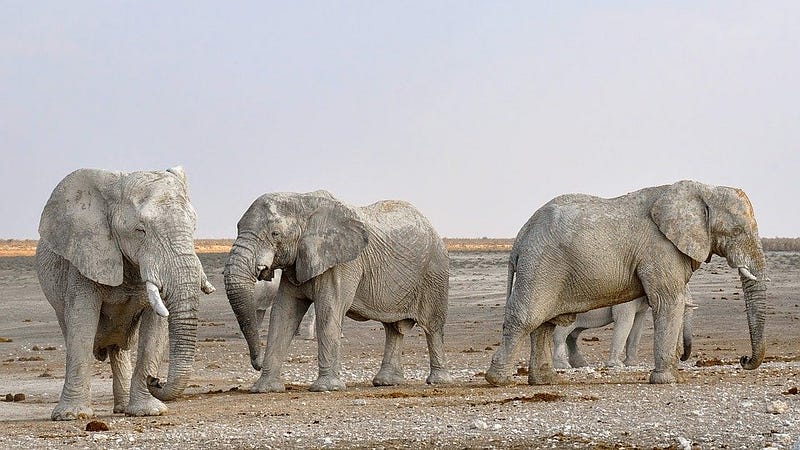How elephants keep their cool
By Paula Hornstein, Biochemistry, 2020

The African elephant has the largest ears of any animal on the planet. This superlative, however, has utility beyond just aesthetics. Unlike humans, elephants cannot depend on sweat to cool them down, as their only sweat glands are between their toes. An elephant’s flapping ears act as fans to create a breeze and contain blood vessels that dilate to increase blood flow and cooling. Their ears can help lower an elephant’s body temperature by 5 degrees Fahrenheit.
The African elephant’s ability to stay cool in the hot sub-saharan sun had long been attributed to these large ears. But these are not the only factors that help them to keep cool in temperatures that rarely drop below 77 degrees Fahrenheit. Multiple studies have shown that the process of keeping an elephant cool is much more complicated than previously believed.
One contributing factor is the elephant’s long, sparse hair all over its body. Hairs conduct heat away from the body, and the sparsity of the hairs is necessary to allow for the release of heat from the skin. Too much hair would be insulating and cause heat to be retained instead of released. In a light breeze, these hairs can allow for an increase in heat loss of up to 23 percent, based on models from Princeton University researchers.
Multiple studies have shown that the process of keeping an elephant cool is much more complicated than previously believed.
Another key attribute is the permeable character of elephant skin. A 2013 study published in the Journal of Experimental Biology found that this permeability allows for increased evaporation without the barriers that animals with generally impermeable skin (like humans) have. This mechanism of cooling is similar to human sweating: As high-energy molecules from in or on the skin evaporate, heat is lost and the body is cooled.
The most recent discovery regarding elephant temperature homeostasis is the significance of wrinkles. Their wrinkles are beneficial in two ways: They provide increased surface area of the skin, allowing for greater heat loss, and form crevices. These crevices can hold mud, water, and clay from a mud bath or splash in the watering hole, retaining the moisture from these materials for further evaporation. The process of how these wrinkles form is still not well-understood, as a 2018 article published in Nature Communications could not fully address this enigma. Further knowledge of the evolution of these wrinkles will help us to better comprehend just how the evolution of elephants allowed them to thrive in their environment.
Nature Communications (2018). DOI: 10.1038/s41467–018–06257–3
Journal of Experimental Biology (2013). DOI: 10.1242/jeb.080218
PLOS (2012). DOI: 10.1371/journal.pone.0047018
